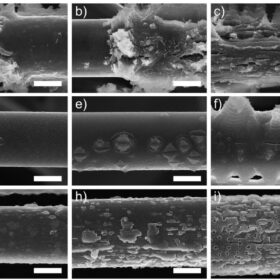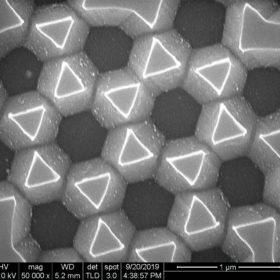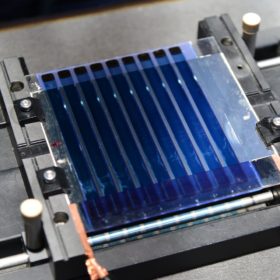Paper-thin carbon fiber for battery with 428 Wh/kg energy density
South Korean scientists have developed a new way to integrate a lithium-metal anode into a battery and reach higher energy capacity levels than current lithium-ion tech. They worked with a carbon fiber paper infused with lithium and demonstrated an energy density of 428 Wh/kg, along with encouraging performance in stability and potential ease of manufacturing.
Nanostructures for ultrathin flexible wafer
Scientists in South Korea combined two processes to etch a nanostructure of tiny pyramids onto the surface of a silicon wafer. As well as trapping more light and increasing the cell efficiency, the group claims that its nanostructure improves the mechanical flexibility of the cells. This could potentially allow for the use of much thinner silicon wafers than is currently possible in production.
More efficient large-area organic solar cells with spin coating
Researchers in South Korea have used the process to increase performance and the replicability of large-area organic cells. The method was used during film formation to speed up solvent evaporation.



